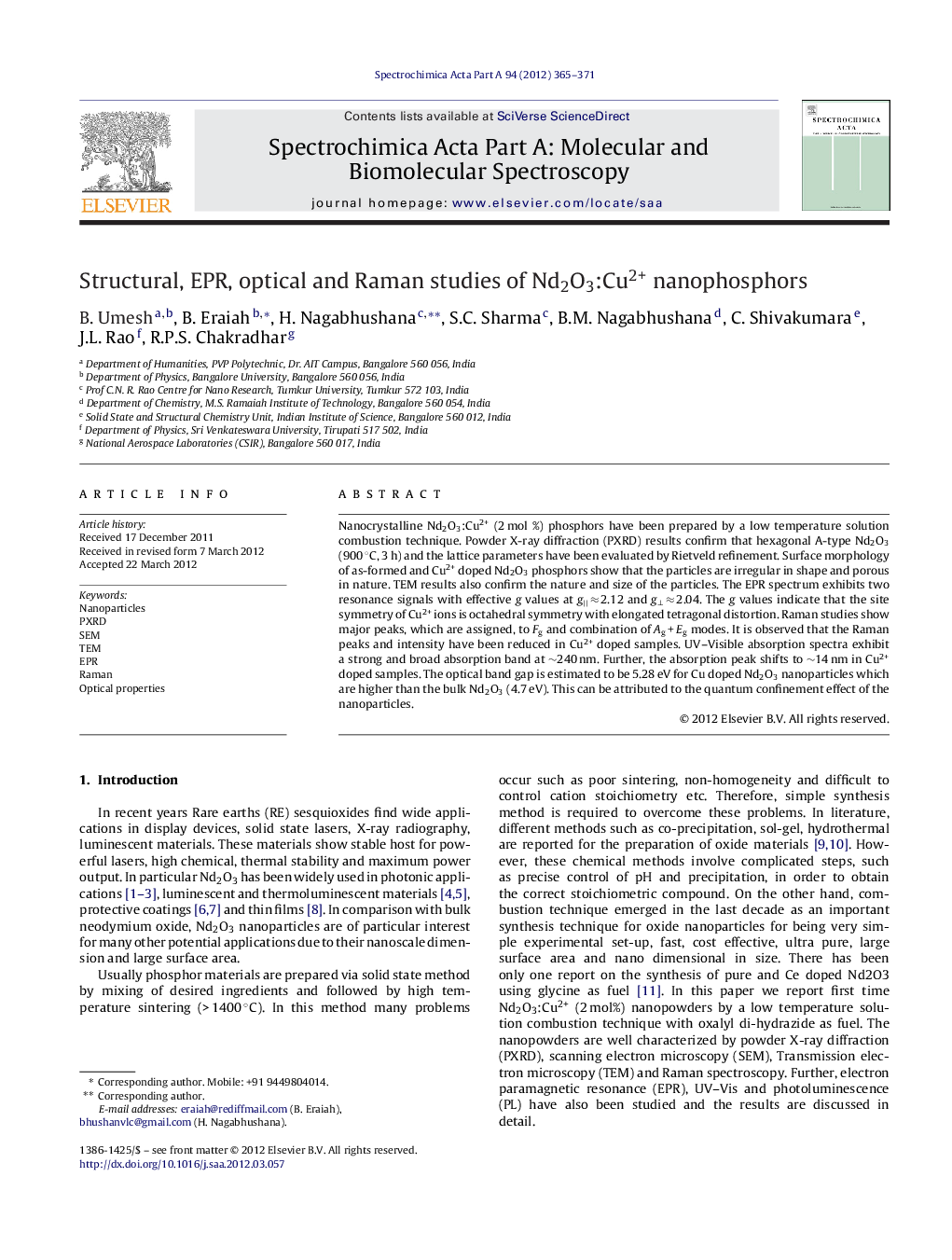| Article ID | Journal | Published Year | Pages | File Type |
|---|---|---|---|---|
| 1231444 | Spectrochimica Acta Part A: Molecular and Biomolecular Spectroscopy | 2012 | 7 Pages |
Nanocrystalline Nd2O3:Cu2+ (2 mol %) phosphors have been prepared by a low temperature solution combustion technique. Powder X-ray diffraction (PXRD) results confirm that hexagonal A-type Nd2O3 (900 °C, 3 h) and the lattice parameters have been evaluated by Rietveld refinement. Surface morphology of as-formed and Cu2+ doped Nd2O3 phosphors show that the particles are irregular in shape and porous in nature. TEM results also confirm the nature and size of the particles. The EPR spectrum exhibits two resonance signals with effective g values at gǀǀ ≈ 2.12 and g⊥ ≈ 2.04. The g values indicate that the site symmetry of Cu2+ ions is octahedral symmetry with elongated tetragonal distortion. Raman studies show major peaks, which are assigned, to Fg and combination of Ag + Eg modes. It is observed that the Raman peaks and intensity have been reduced in Cu2+ doped samples. UV–Visible absorption spectra exhibit a strong and broad absorption band at ∼240 nm. Further, the absorption peak shifts to ∼14 nm in Cu2+ doped samples. The optical band gap is estimated to be 5.28 eV for Cu doped Nd2O3 nanoparticles which are higher than the bulk Nd2O3 (4.7 eV). This can be attributed to the quantum confinement effect of the nanoparticles.
Graphical abstractPacking diagram of Cu doped Nd2O3 calcined at 900 °C.Figure optionsDownload full-size imageDownload as PowerPoint slideHighlights► Hexagonal A-type Nd2O3:Cu2+ (2 mol%) phosphor has been prepared by solution combustion method. ► EPR spectrum shows effective g values at gǀǀ = 2.12 and g⊥ = 2.04. ► Site symmetry of Cu2+ is octahedral symmetry with elongated tetragonal distortion. ► Change in Eg is attributed to the quantum confinement effect of nanoparticles.
